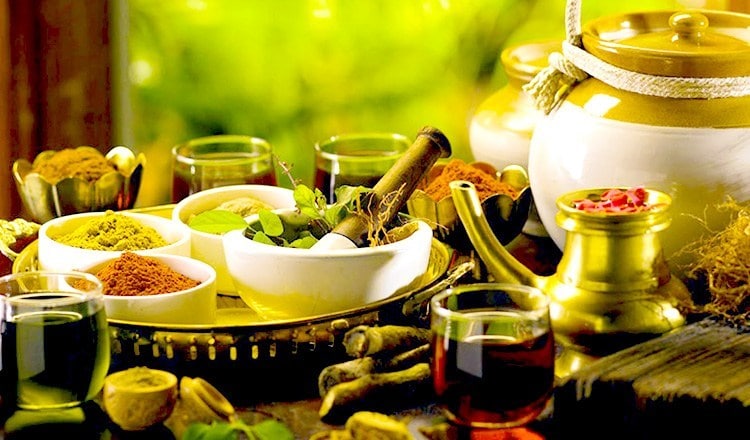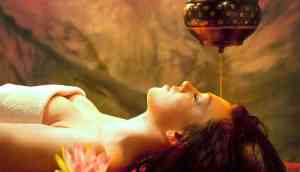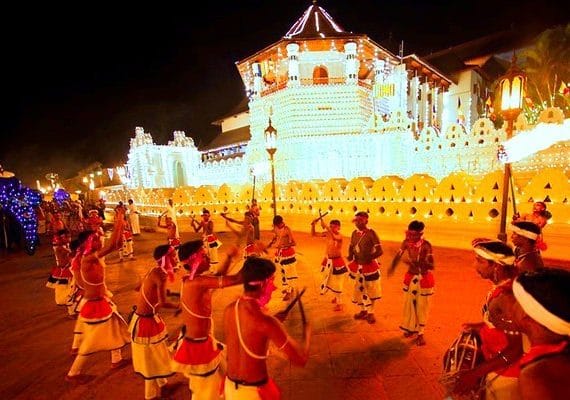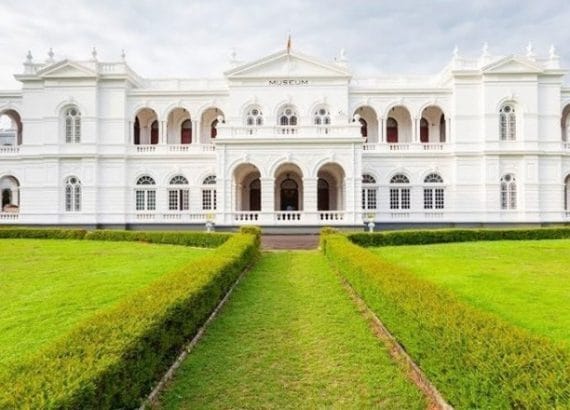Ayurveda Medicines and Treatments in Sri Lanka

Ayurveda Medicines and Treatments in Sri Lanka
Sri Lanka’s traditional form of medicine, Ayurveda uses plants, herbs and oils in its treatments. Translated as the “science of life”, it works on the premise that the body is ruled by three doshas (humours): vata (air), pitta (bile or fire) and kapha (phlegm or earth). In medical terms, these refer to the nervous, digestive and immune systems respectively. Toxins, poor diet, bad digestion, lack of sleep and excess stress cause an imbalance of the doshas and lead to poor health. Ayurvedic treatments aim to balance the doshas and, thus, restore health. Ayurveda physicians prescribe customized treatment plans that include a special diet, while Ayurvedic centres in mid and top-range hotels offer practices aimed at relaxation, such as massages and skin treatments.
Panchabhutas, according to Hindu philosophy, are the five basic elements that make up the universe and all individuals. These are prithvi (earth), jal (water), teja (fire), vayu (air) an akash (ether).
Ayurveda in Sri Lanka Today

Originating in neighboring India, the ancient science of Ayurveda continues to play an important role in the Sri Lankan healthcare system. Ayurvedic practitioners are trained in government-approved institutions and are registered under the Sri Lankan Ayurveda Medical Council. Besides local physicians, several resorts are dedicated to Ayurveda and many hotels also offer treatments.
Ayurvedic Centres
Can be found across the island. Some cater mainly to tourists and offer relaxing treatments. Ayurvedic resorts, however, are for those 5in need of intensive curative treatments that are supervised by physicians. Several resorts also offer a wellness combination of Ayurveda, yoga and meditation.
Ayurvedic products
Ayurvedic products are ubiquitous in Sri Lanka. These vary from medicines to beauty treatments and soaps. Ayurvedic medicines, made from herbs and spices, can be found in the form of capsules, oils, balms or teas. For a glimpse of a traditional Ayurvedic environment, head to one of the speilized pharmacies. These are typically stocked with packets and bottles of tablets, oils and teas as well as dried ingredients such as powdered herbs and whole roots.
Ayurvedic Treatments
Ayurveda aims to eliminate the body’s toxins and balance its energy. Herbs, plants and oils are used to achieve this through treatments such as oil massages and steam baths. Ayurvedic therapies are believed to be beneficial for a range of medical conditions, including diabetes, high blood pressure, arthritis and skin aliments. They are also said to improve digestion and eyesight as well as slow the ageing process. Facial or head massages, steam baths and body wraps are ideal for reducing stress and detoxing. One of the best-known treatments is shirodhara, which offers relief from stress and insomnia.
A massage with medicinal, herbal oils is one of the oldest Ayurvedic treatments and is tailored for different ailments. It is believed a massage returns balance to the body’s three doshas. De-stressing massages are a great way to relax the muscles after a day of sightseeing. Head, foot and full-body massages are particularly popular.
Shirodhara is a popular treatment where warm oil is poured steadily onto the centre of the forehead or “third eye”.
Ayurvedic baths are considered highly therapeutic. Herbal and steam baths are believed to open the pores and rid the body of toxins. Flower baths, on the other hand, close the pores and are often taken at the end of a treatment.
Marmapuncture, or Ayurvedic acupuncture, is an ancient art in which needles are inserted into the skin at marmas (points) that correspond with the 14 nadis (main energy channels). This aims to restore balance to the body by unblocking the nadis, as it is often used in conjunction with other treatments.






